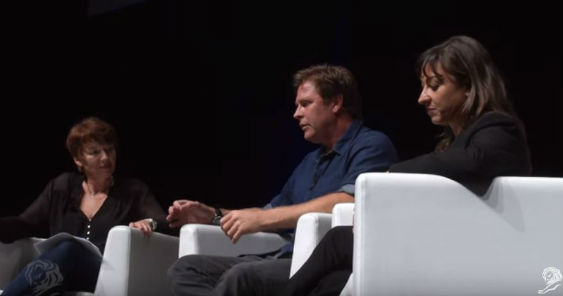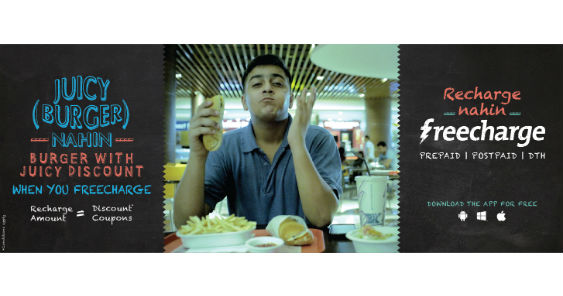by Rome Jorge
There are times when the worlds of advertising and journalism seem at odds. One sells products slickly while the other presents truth unvarnished and unbiased. Yet both rely on authenticity for credibility. Both engage in storytelling to connect with audiences, striving to tell the story with just one image in an unceasing attempt at concision and impact. With both journalism and advertising, it is not enough to possess the medium or a message; those who engage in truth telling must be sensitive to both its subjects and its audiences if they are to be listened. There is much to learn from one another.
Getty Images, having made its mark with ubiquitous stock images used in both the creative process and marketing materials, has led the way with innovations such as royalty-free photography, user generated content, legal file sharing for non-commercial use. Just as important is its vanguard role in upholding the timeless principles of photojournalistic integrity.
At the ongoing 2016 Cannes Lions International Festival of Creativity—the preeminent creative awards in the world held at the French Riviera—the most esteemed photojournalists of Getty Images took to the stage at the Lumiere Theatre on June 23, 4pm (local time) for a Lions Live seminar entitled Unfiltered: Storytelling from the Frontline, the video of which was streamed live globally [https://youtu.be/DZDGqMoLQZE].
Riveting audiences with their photographs and insights were several preeminent photojournalists.
Lynsey Addario is a survivor of abduction and abuse at the hands of the Libyan government in 2011 as well as deliberate intimidation and harassment by the Israeli Defense Forces during that same year and is the subject of an upcoming movie starring Jennifer Lawrence and directed by Steven Spielberg based on the book she authored, It’s What I Do: A Photographer’s Life of Love and War [http://itswhatidobook.com]. Even more impressive than her bravery and dedication are her unforgettable and heartbreaking images [www.lynseyaddario.com].
Brent Stirton is a senior photographer for Getty Images whose work has appeared National Geographic, Newsweek, CNN Traveler, The New York Times Magazine, and The Washington Post Magazine, to name a few. He has worked on advocacies such as Global Business Coalition against AIDS, the Global Fund against AIDS, Tuberculosis and Malaria. the World Wide Fund for Nature, the Ford Foundation and the Clinton Foundation. His dedication to making this a better world is reflected by his photographs [www.brentstirton.com].
Aidan Sullivan is vice president of photo assignments Getty Images, United Kingdom, who founded Reportage by Getty Images in 2009. Sullivan won the International Picture Editor of the Year award at Visa pour l’Image, is a master for the Joop Swart Masterclass, and was a jury member for the 2011 World Press Photo contest [http://www.reportagebygettyimages.com].
Also onstage was Dawn Airey, Chief Executive Officer of Getty Images. Prior to her appointment to her current postion in 2015, Airey was senior vice president of Yahoo!’s Europe, Middle Eastern and Africa (EMEA) region, and Chairman and CEO of the United Kingdom’s Channel 5. [http://press.gettyimages.com/getty-images-appoints-dawn-airey-as-chief-executive-officer/]
Doing business is doing good
In his introduction, Sullivan declared, “Consumers are increasingly discerning and savvy. And often they are truth finders going beyond the surface of brand managing. Simply put, millennials will not do business with brands that they do not perceive as doing good. Credibility and integrity have never been more important. The challenge now is how do we tell our stories in ways that are authentic and will engage the consumers. The potential of imagery to provoke conversation and drive change is unquestionable.”
“As native advertising and sponsored content evolve, brands have the opportunity to fund powerful, evocative editorial content that traditional media can no longer support. Brands can be the benefactors of these important projects. Identify a cause that your client believes in and supports, and a tireless and impassioned photojournalist can give that story a voice,” he implored.
Taking sides
Stirton narrated the context behind his photo of a dead silver-back gorilla being carried by mournful rangers in Virunga National Park Democratic Republic of Congo (DRP) [http://infocus.gettyimages.com/post/brent-stirton-the-photo-i-took-that-meant-the-most-to-me]. “It’s one of the worst places in the world since the Second World War in terms of death rates. It’s very hard to find positive elements there. But inside Virunga National Park are a group of 300 rangers—men and women who look after a place the size of Israel and they do it in the face of two rebel armies, 17 different paramilitary groups and these guys stay. When I was first working there they did it for no money,” he recounts, revealing, “In this particular picture, they’ve [rebels] killed seven mountain gorillas, which are the most endangered primates in the world. They’ve done it to protect an illegal charcoal trade in the park. And the rangers came up against them and some of them were killed as a result and they are still being killed at a rate of three or four a month. [http://news.nationalgeographic.com/news/2007/08/070816-gorillas-congo_2.html]”
“In our job, we come up to good and evil and it becomes very clear who should we should be supporting. And so me working with these guys was very transitional. It wasn’t a grey area. Our job is a lot similar to the advertising work that you do in that we are trying to sell you something. It’s the notion that you should care about an issue. And if we do it well it works on multiple levels,” he confides, adding, “For me, coming out of conventional photojournalism, I was able to find a group I was most useful and I think it’s the same for all of us, no matter wether you’re selling cars or selling an issue, if you feel you’re useful beyond your own self or your own family, that’s what we strive for. For me, in the world of conservation photojournalism, I found a way to be useful. It’s very rewarding and satisfying for me.”
He reveals, “What was most extraordinary was we’ve covered the war in the DRP. We’ve done what we thought were powerful images. But people got used to it. Then this picture came out and we got an unprecedented response and we raised US $15 million for gorilla conservation.”
He observes, “It was interesting in terms of gauging how people reacted to the perception of innocence. They perceived animals to be more innocent than humans. Somehow they were more blameless. That was absolutely not the case, but it was a tool that we could use to talk about Congo in a different way, a story that had been told for ten years. The first time I went into this area there were a million refugees living in this park from the Rwandan genocide. It’s interesting to find new ways to talk about what are very cyclical issues. Everyone in this audience has that issue—looking for new ways to talk about things that are cyclical.”
Moderating the talks, Airey went through more photographs Stirton took at the Virunga National Park, this time of the illegal elephant ivory and rhinoceros horn trade.
“When it comes to ivory, I’ve done two investigations. One was the connection between ivory and religion. All those tusks that you see, the high end use for that is religious carvings. The irony is you deify god by killing his creatures,” Stirton notes. His pictures include both Roman Catholic religious ivory carvings in the Philippines as well as Taoist ivory sculptures in China. [http://ngm.nationalgeographic.com/2012/10/ivory/stirton-photography]
Stirton then shows a photo of Asians consuming ivory products. “This is all about new Asian money. We’re living in this time where there’s no time to educate these populace that have all this new money and these ancient cultures and traditional beliefs. You’ve got that conflict and at the same time they’re really important business partners. Dealing with the rise of the Chinese and Vietnamese in a way that’s respectful but also impactful is very challenging but you are able to have a dialogue with them in a different way. I’ll go to China next year and lecture at a Chinese university to the youth and talk about what I’me seeing. It has to happen in such a way that it’s not an attack. For you [advertisers] it’s strategy all the time. Well, for us it’s the same.”
Getting people to care
“Lynsey, you’ve made a particular focus on maternal health issues, and some of your recent work appeared on the cover of Time Magazine. It was a powerful image about how rape was being used as a weapon of war. You have this extraordinarily powerful beautiful image of this young woman, Ayak. There is a horror to her story. Yet you presented it in an extraordinarily beautiful and dignified way,” noted Airey. Addario’s images, like Stirton’s, are situated in the Democratic Republic of Congo. They focus on another aspect of the conflict there, this time the systematic use of rape in warfare. [http://time.com/war-and-rape/]
“What Brent said was interesting. I’ve been working at the DRC for ten years and people have lost interest in the people of the Democratic Republic of Congo. There could be one million refugees internally displaced. People see another picture of a refugee and they just turn the page. But people see a gorilla and they donate US $15 million. The question for us is how do we get people to care about things that they’re tired of seeing” explains Addario.
By focusing on a specific aspect of the war, Addario was able to focus world attention on the conflict. “I’ve been covering women’s issues and, maternal health issues. I wanted to cover that because at that point about more than 500,000 women were dying during childbirth. It was important to address that issue. Ninety eight percent of those deaths were completely preventable. As a woman and now as a mother that is a statistic that is not only offensive but also shocking,” she exclaims.
“Rape as weapon of war is something I’ve been covering since 16 years ago. I first came in contact with in Darfur where a woman openly explained to me that she had ben raped. I keep documenting it.”
“When I met Ayak, we were doing a story on South Sudan. Ayak is South Sudanese. She was living in a safe house in Uganda. She had ben sexually assaulted over the course of a year an she became pregnant from one of those rapes. We spent two days and nights talking to the women and hearing their stories, telling our own stories. And I started photographing.”
“It’s an incredibly sensitive process. Women who has been sexually assaulted, they have to decide to draw the boundaries what’s okay. Do they want to show their face? Do they even want to be photographed?” Do they want to give their names? These are all questions that I am repeatedly asking. I brought a copy of Time and said, ‘This is where your face will be. Are you okay with that?’ It’s important to let them know what the situation is. I had to explain it would be on Facebook. Facebook is something ironically even across villages in South Sudan understand. They understand social media. They understand that their picture can be on the internet. When we finally determined what was okay with Ayak, we spent a night photographing her.”
“This story is really about a woman who is keeping the child of her perpetrator. How do I show that? She’s nine months pregnant. So obviously it’s with her stomach. I went to her and said, ‘I believe the story will draw attention if I photograph showing her stomach.’ And before I could speak the words out of my mouth she had taken her dress off. She was very comfortable,” Addario narrated. [http://time.com/4211877/secret-war-crime-rape/]
Addario adds, “After this picture was taken, Ayak decided she wanted to help other women in South Sudan. She had fled to Kenya where she was educated at a refugee camp, so she speaks some English. She had moved back to South Sudan and that’s when she was assaulted. Ayak has decided she wants to help other omen who have been rape and wants to go back to school in Kenya to get a degree to be a counsellor. So when I found out, they set up a fund for Ayak. I check in a lot on how’s she doing and how’s her baby. Of course she’s given birth since then. That’s how I keep in touch with her.”
Lynsey Addario and Brent Stirton continue to garner the world’s attention for issues they hold dear. As photojournalists, they aren’t afraid to take sides or focus on an old problem in a new way.









